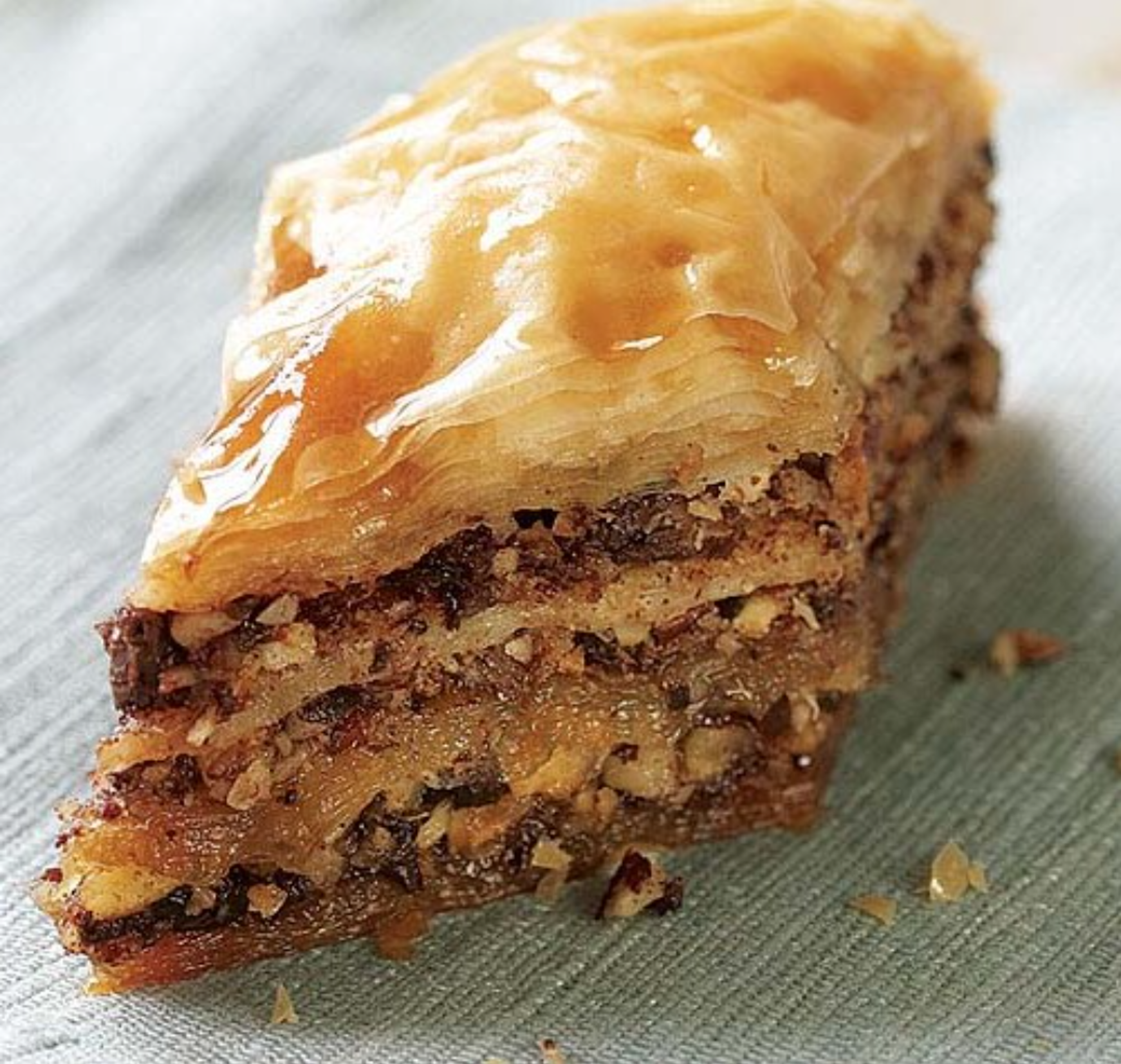The buzz on baklava
A Pinch of Salt
By Donna Marie Riani
Oregon honey is un-bee-lievable. This superfood is antimicrobial, antibacterial and loaded with antioxidants. Not that long ago, soldiers would put honey on wounds to prevent infections. If stored properly, it will never go bad. Honey has been unearthed from ancient Egyptian tombs and upon tasting, was still delicious.
Raw honey, which has not been high-heat treated or ultra-filtered, is the best. It is allowed to retain its natural enzymes and nutrients like pollen, propolis, royal jelly and beeswax. These are the properties that make it a powerhouse.
In doing research for this story, I was pleasantly surprised to find out how many passionate beekeepers there are in Oregon.
When my sister and her husband realized they had a colony of bees living in their barn, I was able to view honey production up close and personal. They called in a beekeeping expert and learned how to help the colony and harvest the honey. They ended up with many jars of honey and loads of beeswax for candles.
I am in awe of what nature can do, especially if we get out of the way and let it do its thing.
There are many varieties of honey and the different varieties are determined by the floral source that the bees decide to visit, such as clover, buckwheat and blackberry.
The honey bee was on the verge of extinction in the mid 2000s due to pesticide use, climate change and habitat destruction. Luckily, we have very dedicated and knowledgeable beekeepers here in Oregon that make sure the honeybee is thriving.
Now let’s talk about my favorite thing about honey — it’s so delicious. When I think of recipes that contain honey, the first one that comes to mind is Baklava — layers of phyllo dough, nuts and honey syrup.
There are many different versions of this Mediterranean and Middle Eastern sweet. The one I’m sharing with you is Greek. I love the addition of lemon juice. To me it’s very welcome because the acid from the lemon tempers the sweetness of the honey.
A word of advice — Phyllo dough can be a little challenging to work with. If it’s tearing or falling apart, just go with it. At the end of the day it won’t matter. Once the Baklava is baked and topped with the syrup, it won’t be that noticeable.
Baklava
• 18 ounces of nuts, coarsely chopped (you can use pistachios, hazelnuts or walnuts or combine all three)
• 1 tablespoon ground cinnamon
• Small pinch of ground cloves, optional
• 16-oz package phyllo dough, thawed
• 2 sticks of salted butter, melted
For the Honey Syrup
● 3/4 cup white sugar
● 1 cup water
● 1 cup honey
● 1 tablespoon vanilla extract
● 1 tablespoon lemon juice
Preheat the oven to 350 degrees F.
Make the honey syrup first: Place the sugar and water in a saucepan and heat over medium heat, stirring occasionally, until sugar dissolves. Add the honey and vanilla, stir to mix. Bring to a boil, then lower heat and let simmer for about 20 minutes, stirring occasionally. Remove syrup from heat and stir in the lemon juice. Set aside to cool.
In a food processor fitted with a blade, add the nuts. Pulse a few times to chop but not pulverize. Transfer to a bowl and mix in the cinnamon and ground cloves.
Unroll the thawed phyllo and cover with a damp (not soaking wet) kitchen towel to prevent the dough from drying out.
Coat the inside of a 9x13 baking pan with some of the melted butter. Take one sheet of phyllo and place it in the pan. Using a pastry brush, brush the top of the phyllo sheet with the melted butter.
Repeat this process until you have used up about a third of the phyllo, brushing each layer with the melted butter.
Sprinkle half of the nut mixture evenly over the top layer of phyllo.
Continue assembling the baklava, one sheet of phyllo at a time using another third of the phyllo. Again, brushing each layer with the melted butter.
Sprinkle the remaining half of the nut mixture evenly over the phyllo.
Finish with the remaining third of the phyllo following the same process. Brush the very top sheet of phyllo with butter.
Using a sharp knife, cut the Baklava into 12 or 16 squares. This step must be done before baking.
Place the Baklava on the middle shelf of your preheated oven. Bake for 35 to 45 minutes, until the top is golden brown.
As soon as you remove the baklava from the oven, pour all of the cooled honey syrup over it. The Baklava will need an hour or two to fully absorb the syrup.

